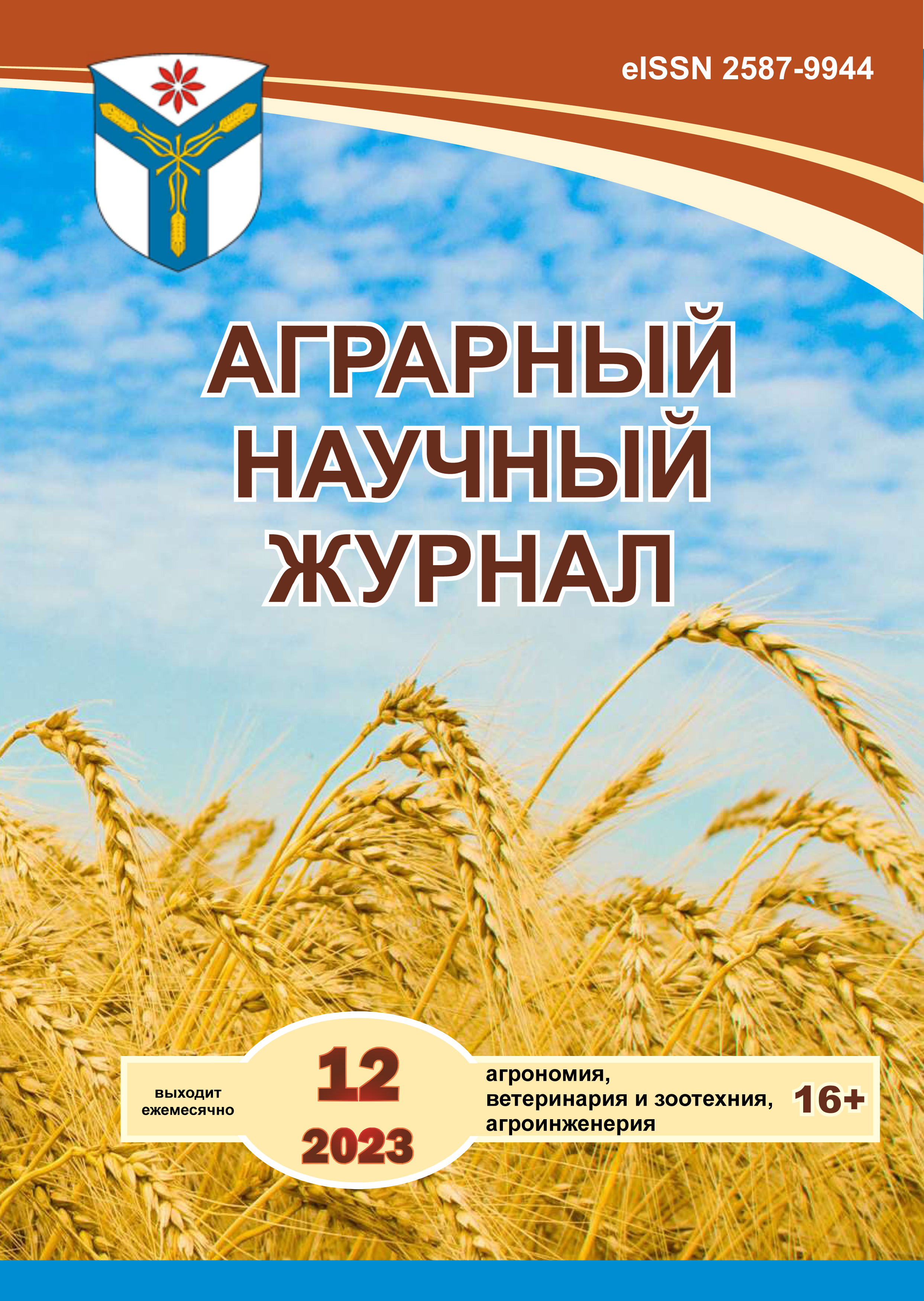Yield of spring durum wheat against the background of cellulolytic activity of the soil
DOI:
https://doi.org/10.28983/asj.y2023i12pp75-80Keywords:
cellulolytic activity of soil, nitrate nitrogen, crop rotation, monoculture, productivity of spring durum wheatAbstract
Long-term studies were carried out in the field at the station on crop rotations and monocultures of the department of agriculture and resource-saving technologies of the Federal State Budgetary Scientific Institution "FNTs BST RAS", located in the Orenburg region (51.775125° N and 55.306547° E.). The purpose of the study was to establish the influence of the cellulolytic activity of the soil and the quantitative content of nitrate nitrogen in the soil in combination with meteorological factors on the yield of wheat grown for many years (21 years) in crop rotations and monoculture in the Southern Urals. The object of the study is spring durum wheat cultivated in crop rotations of various rotations, a set of crops and monoculture, as well as soil samples according to the experimental options. When determining the cellulolytic activity of the soil, the method of decomposition of linen fabric under the influence of microorganisms was used. The yield of durum wheat is influenced by such factors as predecessors, including their aftereffect in the crop rotation system, as well as the prolonged effect of mineral fertilizers. The average yield of durum wheat (for 21 years of research) in six-field crop rotations is 0.71 t/ha, with fertilizer 0.76 t/ha. Cultivation of durum wheat in two field crop rotation increases its yield by 0.07 t, in six fields 0.23 t/ha relative to monocultivation of the crop according to two backgrounds of soil nutrition. Cultivation of durum wheat in a six-field crop rotation on green manure fallow is accompanied by increased cellulolytic activity (12.0%). In the monoculture of durum wheat, the consumption of N-NO3 during the growing season increases to 20 mg with fertilizer up to 16 mg per kg of soil on an unfertilized background, which is associated with an increase in weediness and consumption of the macronutrient by the weed component. The share of output of grain units of durum wheat in six-field crop rotations is up to 16.3%, in two-field crop rotations up to 47.9%, with mono-cultivation of crops 100%.
Downloads
References
Анализ лимитирующих агроэкологических факторов урожайности и качества твёрдой пшеницы в засушливых условиях / И. И. Васенёв [и др.] // Достижения науки и техники АПК. 2019. Т. 33. № 12. С. 30–37.
Балашов В. В., Лёвкина К. В., Кудина К. А. Урожайность яровой твёрдой пшеницы в зависимости от гидротермических условий на светло-каштановых почвах Волгоградской области // Известия НВ АУК. 2017. № 4. С. 29–35.
Влияние минеральных и микробиологических удобрений на биологическую активность каштановой почвы и продуктивность яровой твёрдой пшеницы в условиях сухостепного Заволжья / К. Е. Денисов [и др.] //Аграрный научный журнал. 2022. № 12. С. 27–30.
Востров И. С., Петрова А. Н. Определение биологической активности почвы различными методами // Микробиология. 1961. Т. 30. Вып. 4. С. 665–672.
Горянин О. И., Щербинина Е. В. Совершенствование технологии возделывания яровой пшеницы в Поволжье // Аграрный научный журнал. 2020. № 6. С. 11–14.
Денисов К. Е., Полетаев И. С., Гераскина А. А. Влияние различных схем питания на урожайность яровой твёрдой пшеницы при разных способах основной обработки почвы // Аграрный журнал. 2022. № 5. С. 10–12.
Кузнецов Д. А. Влияние минеральных удобрений и норм высева на урожайность и качество зерна яровой пшеницы //Аграрный научный журнал. 2020. № 11. С. 25–29.
Скороходов В. Ю. Совершенствование технологии возделывания яровой твёрдой пшеницы в степной зоне Южного Урала // Аграрный научный журнал. 2020. № 6. С. 11–14.
Скороходов В. Ю. Биологическая активность почвы как фактор влияния на урожайность пшеницы твёрдой в монокультуре и севооборотах степной зоны Южного Урала // Известия НВ АУК. 2022. № 3(67). С. 195–202.
Тойгильдин А. Л., Морозов В. И., Подсевалов М. И. Биологизация севооборотов и качество зерна яровой пшеницы в условиях лесостепной зоны Поволжья // Вестник Ульяновской государственной сельскохозяйственной академии. 2019. № 2(46). С. 58–64.
Downloads
Published
Issue
Section
License
Copyright (c) 2023 The Agrarian Scientific Journal

This work is licensed under a Creative Commons Attribution-NonCommercial-NoDerivatives 4.0 International License.








